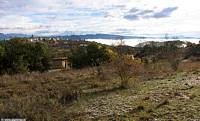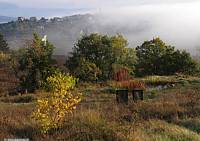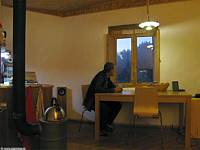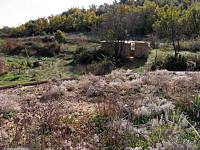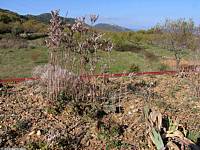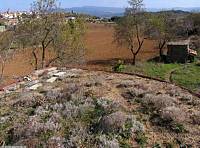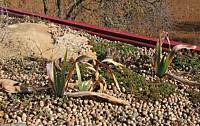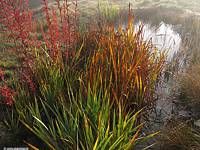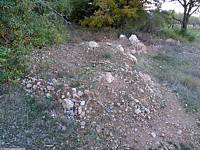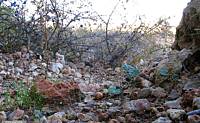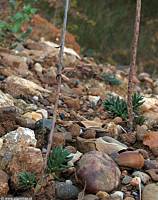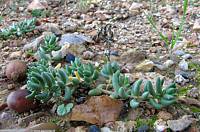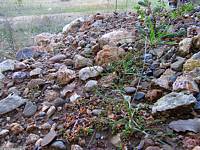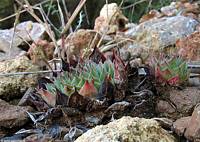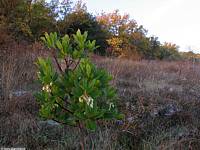|
|
Nature
Switched On
|
|
|
introduction
|
2010 October 30 to November 6
The most striking however are the temperatures inside our
strawbale garden house. They still don't practically get below 20ºC,
night or day, without heating from the woodstove. The explanation for these remarkable results has to be found in
the heat production of our new refrigerator,
together with the extreme isolation of the strawbale walls. (Last
year we were without this fridge and we had to make use of the wood
stove in October.) Nevertheless, the sun has still been prominently present these
days and temperatures have been relatively benign for this time of
the year; little by little the soil and basement will get colder and
this might all lead to quite different results in coming weeks. |
|
|
The mountain tops are frequently covered with fresh snow in the
morning. 1 Nov 8:55 |
||
|
In the early morning. Inside 21.4ºC, outside 6.4ºC. The wood stove hasn't been lighted yet. 6 Nov 7:17 |
||
|
Climbing up the ladder for the regular inspection of the green roof
offered no spectacular news but did offer nice views of the
surrounding area, so here some impressions.
|
From the roof looking south, with the green house at the back. 5 Nov 12:43 |
|
| Dry
flower stalks of Sedum sediforme, with numerous seedlings of
Alyssum alyssoides on the extreme right. 5 Nov 12:27 |
Looking east. The cereal fields have just been sown with
barley. |
|
| Some
Iris germanica plants among the spreading Sedum anglicum. The red 'rail' is the recently painted roof rim. 5 Nov 12:33 |
||
|
Another example of an acquired taste are the withering leaves of
Sparganium erectum in the superior pond. When the sun shines
through them the effect is fascinating. |
||
| Red
stalks of Lythrum salicaria, brown-orange Sparganium
leaves and yellow-green Iris pseudacorus leaves. 30 Oct 9:46 |
Superior pond with Sparganium
erectum on the left and Iris pseudacorus on the
right. 1 Nov 8:25 |
|
|
In order to offer a different perspective on the zone I start here a
new section, regularly updated and focused on the same limited area.
I propose to get down on my knees. This usually opens up a
completely different micro cosmos which I will try to capture with
the macro setting of the camera.
The area I chose is the rockery near the entrance to the zone.
This rockery was set up
last April, using the debris left over from the foundation
of the house. I added some left-over form the clay filtering (for the
plastering of the walls) to the upper layer to help establish plant
life but the soil is for the most part extremely rocky to a depth of
about 40 cm. To further stimulate plant life, clippings of some
Sedum species (S.album, S.sediforme, S.anglicum, S.acre,
S.reflexum. S.telephium) and Sempervivum tectorum were
planted. Already present and peeping anew through the debris are
numerous dwarf shrubs of Blackthorn
(Prunus spinosa), in the north-west
part of the area.
As usual, the emphasis will be on a graphical account of what happens in this area, with only brief comments and suggestions.
|
The rockery surrounded by Portuguese oaks (Quercus faginea) with the entrance on the right. The Prunus spinosa shrubs are at the back. 5 Nov 16:31 |
|
|
Seedlings of
Malva neglecta on the right. Prunus spinosa with blue
berries at the back. 5 Nov 16:55 |
||
|
After flowering Sedum sediforme often looks exhausted and
bound to disappear but then usually new sprouting appears at the
foot of the flower stalks. 5 Nov 15:59 |
Sedum album with seedlings of Malva neglecta
and the grass Bromus diandrus. It will be
interesting to follow the development of the green moss. |
|
|
Since planted with the other succulents in April, this
Sempervivum tectorum has already formed three tillers (one can be seen). |
|
Sedum anglicum sticking
to the ground with the barely distinguishable tentacles of Vicia
peregrina. |
|
Medicago minima and the intriguingly violet-coloured
Fallopia convolvulus. 5 Nov 16:08 |
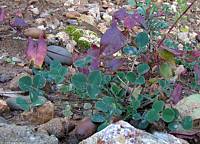 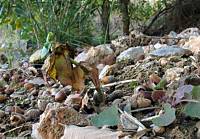 |
Not all of the planted clippings
of Sedum telephium survived but this one probably will. The seedling on the right is Sonchus oleraceus. 5 Nov 16:06 |
|
Two seedlings of Chenopodium album
with Medicaga minima
(left) and Plantago lanceolata (right). The acorns are from
the Portuguese oaks. 5 Nov 16:12 |
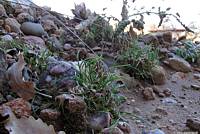 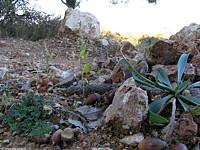
|
The curious reproduction of Poa bulbosa with sprouting bulbs on the flower stalks. Compare below. 5 Nov 17:18
|
|
The only flowering plant these days in the rockery:
Erucastrum nasturtiifolium, which can be found flowering at almost any
moment of the year in the zone. 5 Nov 16:29 |
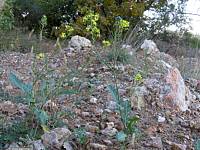 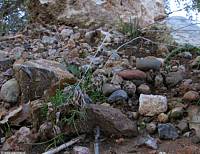 |
The same Poa bulbosa from
the image above, with the mother plant at the back. 5 Nov 15:56
|
|
The Strawberry tree (Arbutus
unedo) is giving more signs of activity |
||
|
Flowering Arbutus unedo
in the centre of the zone. 6 Nov 8:03 |
||
|
introduction
|
|
